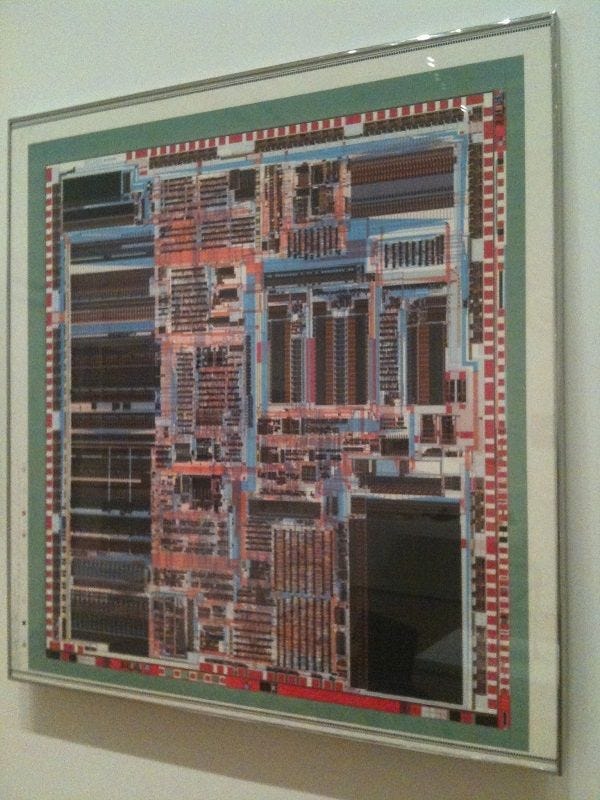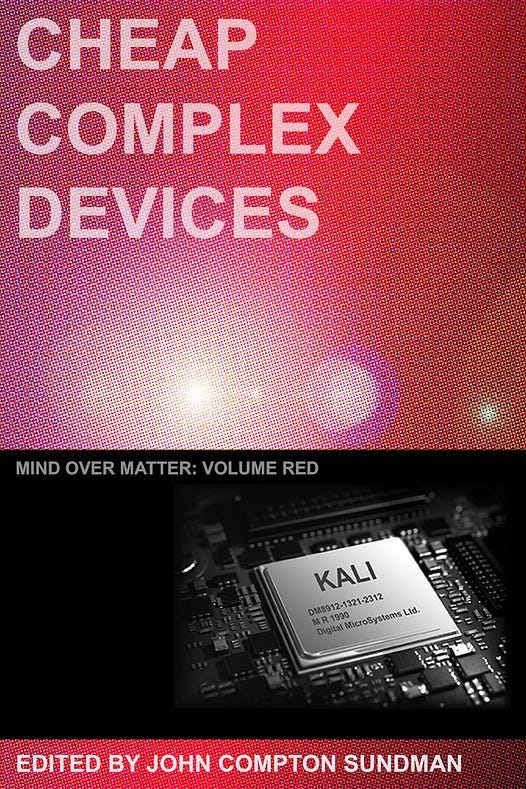Honored samurai, ruthless ronin, wayward vagabonds, shadowy ninja and helpless villagers... welcome.
Opening Volley
As with so many other creatives I’ve met over the years of social media schmoozing, I don’t recall where or when exactly I met John Sundman. What stays with me are visceral moments of his work, wit and wherewithal. Though an “accidental” author of fiction, John’s knowledge of his subject is experienced and firsthand giving it nuance that is frighteningly prescient at times. Working in the shadows of cyberpunk for MANY years, he is a dark horse with dark visions, he is finally coming into his own, cultivating the recognition he deserves (“glowing bullshit” to hear him speak of it), with writers like Cory Doctorow and Ken MacLeod writing introductions to his works. But I get ahead of myself... John, take it away.
Main Event
Hidden Titanic
One day in 1988, while walking down a hallway of 2 Federal Street, Billerica, MA, home of the East Coast Division of computer maker Sun Microsystems, I came upon my friend Scott, who was staring at a very large etch plot of a computer chip he was designing affixed to the wall. He looked somewhat bedraggled and somewhat befuddled. I knew he had been wrestling with a tricky bug; it had been driving him nuts for some time. His project was behind schedule and he was under enormous pressure to find and fix the problem. He was a very experienced and competent engineer and he was not used to being in this situation. He was stumped.
At the time I had been toying with the idea of writing a murder mystery. I had been a professional writer for a number of years by then, but I wrote books about how computers worked, not novels. I had never attempted fiction.
I asked Scott, “I know how to put a trojan horse in software. Could somebody design a trojan horse into that circuitry and you not know about it?”
Scott turned to me and said, “John, there’s two hundred and seventy-five thousand transistors on that chip. You could put the fucking Titanic in there without me knowing about it.”
So, just like that, I had found the premise for my murder mystery: A chip designer — call him ‘Todd’ — discovers that his co-worker has secretly designed a trojan horse into the logic of a chip that they’re working on together. Todd reports this discovery to his boss, and that very night he gets a bullet in the head. So, who killed Todd, and why? What was the purpose of that trojan horse?
I filed that idea in the back of my mind and went about my business of writing computer manuals. In 1995 I finally decided to write that murder mystery. The early chapters came very easily, but soon enough I had to deal with a nagging question that had been there from the very start: Why would anybody go to all the trouble of putting a trojan horse into the silicon circuitry of a computer chip when it is so much simpler to do it in software?

It was as if the bad guys, whoever they were, had devised an ingenious plan to break into somebody’s house by going down the chimney like Santa Claus when they already had the key to the front door. Why would they do that? It just didn’t make sense. I reached a point where I had to either figure out why someone had hidden a virtual CPU inside another CPU, or I had to give up on the book. I had written myself into a corner.
By the time I emerged from that corner, after four solid years of work, my book longer was no longer the simple murder mystery I had naively set out to write.
It was a thriller about hardware hacking and genetic engineering and mind control and brain-re-arranging nanobots and techno-paranoid cyber-militias and Gulf War Syndrome and what-all else. It was about a man who dreamt of becoming God, and the cult of followers who try to make his dream a reality. It was about the convergence of biological and digital technologies, and hubris, and the postulate of Ted Kaczinsky, the so-called Unabomber, that freedom and technology cannot be reconciled.
I gave my book a title to suggest the religious fervor of Silicon Valley’s belief in technology, with also a hint of apocalypse: Acts of the Apostles.
That book came out twenty-three years ago. It turned out to be pretty prescient in a lot of ways and it has become a sort of cult classic among hackers and geeks of both cyber and bio flavors. I’m preparing a new edition to be released this fall, with a retrospective introduction by Cory Doctorow.
Cyberpunk, biopunk, cyber-biopunk, Biodigital
My own background is more on the digital side of things than the biological, but I married molecular geneticist and I was and am amazed by everything she did in her various laboratories. I made a hobby of studying molecular biology from the point of view of a fascinated ignoramus. (And boy, do I have some stories.)
Hackers look at complex systems as challenges; they are things to be broken into and manipulated for personal gain, or for political reasons, or to fix things that are broken, or for bragging rights, or, perhaps mainly, for fun; which is to say, to learn and to manipulate — as any healthy 10 month old child delights in manipulating a simple toy — and thereby learning so much about the toy, their bodies, their world, and the pure joy of control.
So if "cyberpunk" is the genre that looks at digital systems from a hacker's point of view, then ‘biopunk’ looks at biological systems from a hacker's point of view.
Most non-biohacker/biopunk people make a distinction between, for example, living, carbon-based biological systems on one hand and silicon-based digital systems on the other. Biopunks don't make that distinction. A system is just a system, and the only question is, how do you hack it?
Now if the system is, for example, you — your brain, your mind, your essence, your soul — you may like it just fine the way it is, and you may not want somebody else (where "somebody" might be “the government” or some squicky corporation) to hack it. So then the challenge becomes, How do I define who I am? How do I maintain the integrity of my system?
All my novels deal with themes like these. In Acts of the Apostles, among other things, I imagined nanomachines analogous to bacteriophage that manipulate DNA and rearrange brains (and by rearranging brains, thus minds, and selves). In a lot of ways in Acts of the Apostles I anticipated CRISPR, both how such a mechanism might work on the molecular level and the ethical considerations resulting therefrom.

In Cheap Complex Devices, it's never clear who the storyteller is — it might be a person, it might be a computer program, it might be a brain in a vat or even a swarm of bees. Read it yourself and form your own conclusions.
At the center of The Pains, an illustrated dystopian phantasmagoria that melds two disturbing worlds of 1984: George Orwell’s and Ronald Reagan’s, there is a mysterious laboratory of frozen heads which are probed and manipulated with interesting and unexpected results.
Coda
All meaningful literature, I think, examines the human condition with some seriousness of purpose, and I aspire to write meaningful literature. I don't find it possible to write about the human condition without at least some acknowledgment that we are, in some ways, systems. We're chemical systems, we're biological systems, we're logical systems, we’re social systems. And these systems — by which I mean, us — are (as Kaczynski foretold) are increasingly susceptible to manipulation, control, and —who knows? — annihilation — by the very technology that we humans have created, and, in so many cases, revere.
Please join me. My substack is
We never meet without parting
John, it was a pleasure! Thanks again for guest posting. We will have to do this again! (If anyone else is interested in sharing with my readers, feel free to contact me!)
Next issue... (Still) Marge Simpson, ThirsTrap! (LOL) No change in date. (Next weekend.)
Until then!
Made in DNA









Thank you for the 'likes' and 'share's. Hope you'll subscribe to my substack for more of this kind of thing. Easy to unsubscribe if you find you're not enjoying it.
“turned out to be pretty prescient in a lot of ways” is as modest as Sandy Koufax allowing as he had “enjoyed a few good innings.”